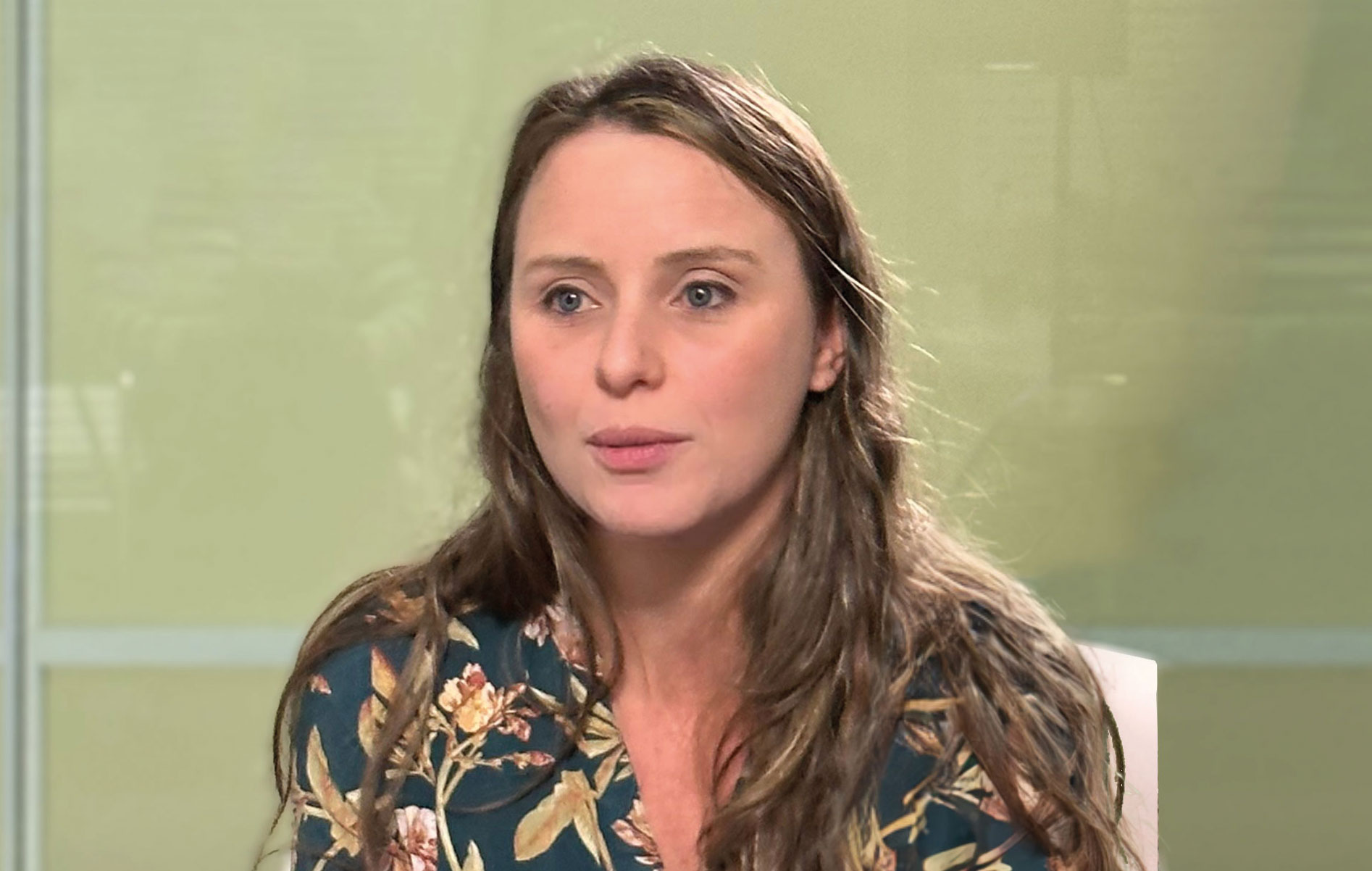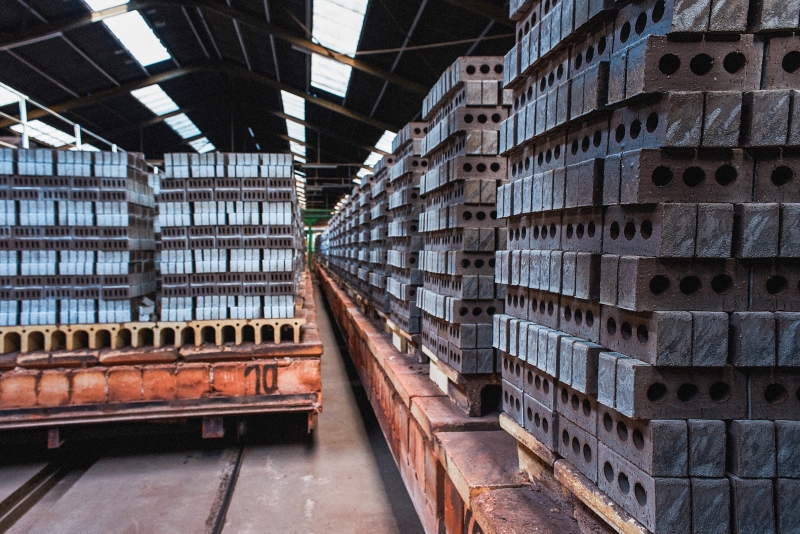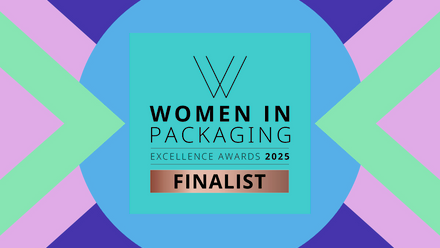Breaking brick
Sarah Le Gresley, Innovation Director at Michelmersh, is spearheading the Hydrogen for Brick Manufacture project. Sarah Morgan catches up on her journey.

Having completed a Sustainability Leadership course with Cambridge University, Sarah Le Gresley, Innovation Director at brick manufacturer Michelmersh, is buzzing. 'I just can’t wait to get onto the next sustainability project that will make a difference…for the whole sector.'
She has certainly proved herself capable of pioneering change within her company and wider industry. The Innovation Director role, after all, was especially created for her as colleagues often came to her with broad-ranging 'problems', that were organisational or operational in nature.
While co-leading the Hydrogen for Brick Manufacture (Hybrick) project at the company, she helped the firm scoop the Decarbonisation Trailblazer Award in 2022 at the ‘Delivering Net-Zero for British Ceramics’ conference, run by the then British Ceramic Confederation (now Ceramics UK). In October 2023, she was also awarded an Individual Special Recognition Award by the same body, which came as a surprise to her.
Her passion for sustainability started early. She recalls that her father, who worked in agriculture, 'was quite passionate about changing agricultural methods…he was trying to change monocrop farming methods…And I think that’s where the passion to try and make a difference in an industry came from'.
Quite rightly then, she feels 'absolutely fantastic' about the recent plaudits for herself and Michelmersh. She says, 'I think it’s important that we have innovation in the industry, but also we collaborate with the smaller and larger manufacturers, SMEs and companies – locally and nationally across the UK – to make sure that we really get to net-zero.
'We are only the fourth largest brickmaker in the UK, so for us it was a real triumph because we are punching above our weight. We are really excited to be leading quite a few different sustainability initiatives across the industry.'
Le Gresley was also shortlisted for the Top 100 Most Influential Women in Construction Awards by the National Federation of Builders in 2023. She has no idea who nominated her, saying, 'That was a really lovely surprise…I’m very humbled and eternally grateful for them doing that'. She continues, 'It feels nice having been in such a male-dominated industry for over a decade now. It feels good to be rewarded as being a female that’s ‘influential’ as they’ve called it.
'[I enjoyed] going to the awards ceremony...[in] the company of other women who have led some interesting initiatives throughout recent years and are the pillar of their part of the sector'.
Hybrick

These accolades partly reflect Le Gresley’s involvement in the Hybrick project from an early stage. She saw it through from before its inception to the first prototype bricks.
It came about from a sustainability group she set up at the company. The CEO then prompted her to collaborate with their headquarters Group Production Director, Mick Brophy. They both concluded that there was an opportunity to investigate hydrogen.
With the advice of others, they applied for funding to bring such a project to fruition. She says, 'I wrote a bid for the UK Government’s Energy Transformation Fund (see p9 for more on this Fund), and we were successful. But we decided it wasn’t quite significant enough to really make the trials a success.'
The funding would only have secured one trial.
They were bold enough to turn this funding down and took the risk of writing a bid for the government’s Industrial Fuel Switching Competition, securing just over £290,000 and enabling them to bring together a team of experienced, knowledgeable partners, including the University of Brighton and Limpsfield Combustion.
The prototype bricks from the first kiln trial now stand proudly on her windowsill. 'They proved between 80-84% less carbon emissions than the methane equivalent, which was absolutely fantastic – a real success.'
She thinks with more trials they could further hone the firing curve parameters. She continues, 'If you are going to make it a commercial reality, you would really be doing 10s, if not 100s of tests, before you put millions of products through the brick line.' So far three trials have been carried out, firing 400 bricks at a time.
Tweaks so far include adding extra oxygen, changing the flow of air, tweaking the burner settings and amending the programme settings, with the aim of obtaining the ‘perfect’ firing curve.
The resulting prototypes have then been independently tested for structural water absorption and compressive strength.
Le Gresley says the project 'was an absolute challenge'. Not least because of the health and safety questions it posed. She is clear in saying, 'we made it our mission, that health and safety was absolutely paramount to the entire study'.
Despite getting in touch with the UK Environment Agency, 'there was very little information they could give us, so we had to write our own standards and operating procedures for the sites'.
However, they were also challenged by the fact that hydrogen is not widely commercially available. So, they were often competing to secure the resource. 'I’d say it was very challenging but extremely rewarding,' she reflects. 'Hydrogen seems a very sensible fuel-switching alternative to natural gas for the firing process, where you need to get to above 1,000°C.'
Setting the example
Le Gresley believes the HyBrick project is her greatest achievement. 'I feel like it’s made such a difference already to the way different industries around the world are thinking about what to do next…there were so many unknowns and so many firsts, that it really is something that I’m quite proud of.'
She emphasises that she is most proud of the fact the project was undertaken by her, as she puts it, 'comparatively small company'. She hopes this will inspire the rest of the industry to do more testing. 'They have got bigger budgets, more resources, more time that they can afford towards making decarbonisation a reality, and we are showing them that, if we all collaborate together, we can get there much quicker as an industry.'
However, on a more sombre note, when reflecting on the direction of the entire industry over the next few years, she says, 'It’s a challenging one. To be honest, I think the whole industry needs a lot more support financially to be able to reach net-zero, which is where we are ultimately all travelling towards.
'I do feel that not much is going to happen in the next couple of years, unless some significant changes are made in policy for hydrogen production in this country, to help manufacturers such as ours invest in the multimillion pounds they need at every single site to upgrade their equipment to accept hydrogen. And to do more trials and testing to make sure that they are happy with the processes, because brick manufacturing is not done in one way across the sector'. As previously mentioned, hydrogen is not commercially available at the scale manufacturers need it.
But she is positive 'it will become commercially available' with wide-ranging benefits. 'The positives are astronomical because it’s not just for brick manufacturing, it’s all heat-intensive industries. So, steel, glass, etc., it can all be moved onto hydrogen…because we are all set up for gas, there should be minimal amendments that would need to be made for hydrogen to be accepted. Some are even discussing blending hydrogen before it is received to different sites – blending hydrogen and natural gas.' However, she thinks the benefits are more intensified in 100% green hydrogen.
And 'there’s a whole variety of other things that we can do from an environmental perspective as well'. She thinks the construction industry needs to strive to do more, such as avoiding materials that do not last as long for the sake of short-term gain, instead of looking at the whole lifecycle of buildings and the whole-life carbon impact over decades, if not centuries.
For now, the Science Museum in London asked to display a small exhibition space with the prototype HyBricks.
Unusual footsteps
Outside work, Le Gresley’s greatest learning experience to date came when she turned down a significant promotion to live off-grid in the Sierra Nevada Mountains in southern Spain.
She reminisces, 'For six years, we lived in Spain and we had a wonderful time...We had a 50-acre farm. We were really living off-grid and practising permaculture. So, we grew thousands of trees and had solar panels, lived off spring water, and it was lovely.
'We ended up having our children there and my husband and I have been together for 20 years. So, it really was an exciting journey. And even though we’re back in the UK, we don’t regret any of it.'
To those looking to follow in her footsteps, she says, 'I would say to always look at situations, issues or difficulties that have been presented to them with a real open mind'.
She stresses humility, 'to be able to speak to different people at different levels conscientiously and with compassion and conviction.
'One thing I’ve learned is to stop and listen and consciously take in what others are delivering to you, whether that’s operational guys on the shopfloor who know their equipment better than you and they can tell you where they think there could be efficiency improvements, or if it’s someone who’s noticed something could be done better. There’s always someone who’s more knowledgeable than yourself at one particular skill'.







